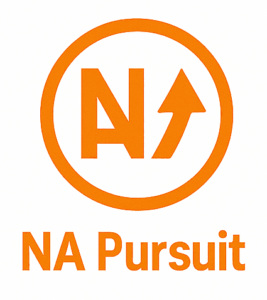Overview:
The insurtech space is not just changing — it is going through a seismic transformation. There are no more incremental advancements of legacy systems. We’re seeing the very beginning of a game-changing, potential nuclear option, that could totally change the insurance industry as we know it. God knows for too long, the ossified monopoly of traditional behemoths have been operating in a near-impunity sense — legacy infrastructure, only token “innovation” and a sheer volume of market share to blunt forces of disruption. But that period of complacency is coming to a close. Insurtech — equipped with AI, big data, and an utter devotion to customer experience — is not simply nipping at the heels of the big boys; it is preparing for a full-scale assault. This is not hype; evidence is accumulating. You see venture backing funding disruptive startups, you see claims processing simplified through robotic process automation, and you see personalized policies adapting themselves in real time.
This blog post is not predicting minor market adjustments. We are exploring whether traditional insurance can even survive. While others maintain that incumbents will be able to adapt, we believe their legacy systems, entrenched cultural inertia and fundamental misapprehension of the contemporary, tech-savvy consumer will be their undoing. That inertia that served them well in years past is now the anchor dragging them down. The question is not whether insurtech will continue to disrupt, but how restlessly and at what pace it will explode the traditional insurance model. This is not a slow burn; it is a rapidly accelerating revolution, and those who fail to see wholesale transformation as a possibility put themselves at risk of falling behind. Lean in: You’re about to face the truth of insurtech’s nuclear option.
This is not an evolution; it is a tectonic shift, and the dinasours fixated on iterations of the old paradigm will be buried. A convergence of powerful forces is rewriting the game, and understanding the trends is key to not just survival, but dominance. So we aren’t coming for that soft analysis; we’re dissecting the battlefield and laying out viable battle plans.
Thesis: The next wave of Insurtech will be defined by two opposing forces – the rise of technology-enabled opportunities for both insurers and consumers, and the threat of reactive regulatory and competitive headwinds. Those strategists that aggressively embrace the former while strategically resisting the latter will not just survive, they will triumph.

Positive Trends:
1.Hyper-Personalization with Data Analytics (Positive): The era of one-size-fits-all insurance is over. For example, telematics and wearables empower AI-enabled analytics that allow for granular risk assessment based on individual behavior and habits, real-time data and analytics8. This enables insurers to offer hyper-personalized policies leading to customer satisfaction and stickiness. For instance, for insurers like Lemonade using AI to evaluate the risk and process claims at lightning speed — it’s not just efficient, it’s creating a whole new customer expectation.
- Recommendation: Invest heavily in data analytics infrastructure and talent Train AI algorithms that can process particularly complex datasets for generating personalized offers. That isn’t optional — it’s the new standard.
2.Embedded Insurance (Bullish): Insurance is not a separate product anymore It’s an integrated part of other platforms and purchasing experiences (e-commerce, travel booking, ride-sharing). This opens up new forms of distribution and customer segments that were not possible before. E.g. Cover Genius teams up alongside online retailers to help provide immediate purchase protection
- Actionable Insight: Look for strategic partners with big customer bases and consider embedding our insurance into their platform. This goes beyond competing for attention and embeds insurance within existing customer workflows.
3.Positive — Blockchain for Transparency and Efficiency: Beyond the crypto hype, blockchain delivers secure, transparent and immutable ledgers that can be utilized for claims processing, fraud detection, and data management. This lowers operational overhead and creates trust with policyholders. For instance: Insurwave uses block chain to manage marine insurance, producing an auditable and tamper-proof system.
- Actionable Insight: Get creative with blockchain: you can use it to improve similar processes within the company or to avoid fraud and provide transparent information about what’s going on in the company. Treat this as a technology that solves problems, rather than as something that generates hype.
Adverse Trends:
1.Regulatory Scrutiny and Compliance Costs (Adverse): As Insurtech changes centuries of the industry, the regulators sit up and take notice with strict requirements for compliance, which almost always increase costs, which could hurt startups and smaller players. Less flexibility and innovation due to the weight of navigating the landscape. This is not a wall, but a hurdle that filters the ill-prepared.
- Solution: Engage with regulators, build a strong regulatory framework, and take compliance into account in your business plan. Think about strategic alliances to alleviate the regulatory burden.
2.Increasing Competition (Negative): The emergence of multiple new Insurtech startups and growing tech combat is leading to a highly competitive marketplace. This pushes down revenues and renders customer acquisition more difficult. The days of free shots are over.
- Actionable Insight: Work towards craft a Unique Value Proposition. Be innovative in your product offerings, customer experience, and niche market focus. You are not looking to play someone else’s game better. Create your own.
3.Cybersecurity Vulnerabilities (Counteraction): With greater dependence on data and digital platforms, Insurtech clothing is vulnerable to advanced cyber-attacks, which may result in breaches of information security, reputational harm, and punitive measures. Not defending is a recipe for disaster.
- Recommendation: bifurcate on strong-infrastructure and security protocols. Perform regular vulnerability assessments and implement best practice employee awareness. Do not treat this as another political issue. This is an existential threat.
The Bottom Line: The Insurtech war is an expensive one. It rewards strategic foresight, technological flexibility and unending innovation while apt punishing complacency and brick-headed adherence to outmoded practices. By holistically embracing the favorable trends and prudently hedging the negative, Insurtechs can not only compete, but also shape the future of insurance. This isn’t a prediction, it’s an observation about the landscape, and the result will depend on action.
- In the healthcare sector, Claims processing, is being disrupted by Insurtech. “Consider a patient going through a procedure; rather than mountains of paperwork, an AI-enabled platform verifies coverage in an instant, pre-authorizes procedures and processes claims, reducing the administrative burden and expediting reimbursements. This optimizes diagnostics and eliminates bottlenecks, enhancing patient experience and significantly reducing providers’ operating cost. Additionally, the integration of wearable technology has enabled Issuing real-time health data which allows insurers to develop personalized policies. Organizations are developing individualized plans based on activity levels and biometrics, incentivizing healthier behavior and preemptably addressing risk.
- In the automotive sector, Insurtech drives pay-as-you-drive insurance models. Telematics devices inside vehicles monitor driving behavior — speed, braking, mileage — and alter premiums in real time. Safe drivers are rewarded with lower costs, and riskier behaviours are reflected in higher rates. This data-driven insurance model replaces one-size-fits-all risk assessments with fair pricing and encourages better driving behavior. Unlike conventional strategies, this system directly eliminates accidents and claims costs for both insurers and consumers.
- In manufacturing, Insurtech helps carve out tailored risk management solutions. Kehdi work on IoT sensors on machines to monitor performance by measuring parameters and get the chances of failures before it happens. Such predictive maintenance data doesn’t just minimize downtime—insurers can also customize coverage based on the data, leading to dynamically priced policies that reflect the actual diffused risk associated with the specific piece of equipment. This forward-looking model makes catastrophic loss events less frequent, vastly superior to the historical insurance model. Supply chain visibility platforms are now able to track goods in transit, allowing for customized insurance coverage based on location, environmental hazards, and other handling conditions, and are fundamentally changing the landscape of cargo insurance.
- Lastly, Insurtech allows the tech industry to take advantage of such flexible coverage. Cybersecurity insurance has evolved into a more sophisticated field, determining potential vulnerabilities, and adapting coverage on the basis of real-time threats. No longer do companies await the inevitable with a blanket policy; using Insurtech tools, companies can understand their unique cyber profile with tailored, dynamic protection. (2) This gives firms a proactive approach to their risk management, providing stronger and more reliable defense against constantly-evolving cyber threats. This move towards on-demand, highly bespoke protection provided by these technologies is a paradigm shift for insurance.
Thesis statement: In the context of changing market dynamics amid growth challenges, insurtech companies have successfully adopted both organic and inorganic growth strategies since 2023 focused on improved personalization, technological convergence, and alliances to achieve durable competitive advantages.
Organic Strategies:
Hyper-personalization based on data analysis is a priority for many companies. Lemonade, for example, has, despite using AI and generally losing, continued to double down on these assessments, providing risk in lipstick and dining for customers, only focusing premiums and coverage on the specific behaviors and circumstances of the individuals. Offering more relevant policies in this manner helps drive up customer retention and new business. Against the narrative that you need massive quantities of data to be able to personalize, smaller insurances and insurtechs are working alongside data aggregators, acquiring external data that they can use to duplicate or enhance the product that they offer to remain abreast. This allows them to provide nuanced risk assessments.
![]()
Expanding product portfolios to become full insurance platforms is another common strategy. Rather than honing in on a single niche, companies such as Hippo are introducing homeowners, auto and other insurance products to their technological platforms. This enables them to take a bigger chunk of the customer wallet and it increases customer lifetime value. On the other hand, others like Next Insurance are focusing on niche areas, more in particular small business. That allows the company to provide specialized solutions and work efficiently in particular areas, instead of trying to dominate all sectors. This is one of the ways to improve customer experience through a strategic approach.
Inorganic Strategies:
2023 has brought a boom in strategic acquisitions, as traditional insurance companies are buying insurtechs to get access to their innovative tech. A legacy insurer can, therefore, acquire an insurtech that specializes in claims processing, to quickly improve its backend operations. Essentially what we’re seeing is a shift from a competitive model to one of collaboration between a company like PDD and its tech partner, combining the latter’s tech and the former’s market access. To contradict the idea that insurtechs are always ethereal add ons to existing companies, we can note that incumbent companies are using acquisitions to bypass their own digital transformation. This, in turn, enables traditional insurers to deliver better digital experiences.
Moreover, collaborations and partnerships of Insurtechs with embedded finance platforms are on the up. Insurance companies are embedding their insurance products into fintech apps, enabling them to tap into a larger market. In addition, insurtechs have formed partnerships with real estate companies or online loan providers, enabling them to insert home insurance directly into the customer journey. It reduces convention friction and increases conversion rate. Not only does this provide previously-uncapturable demographics but it shows continued attention on customer centricity.
Outlook & Summary: The Inevitable Collision Course
It’s not a question of whether insurtech could disrupt traditional insurance, but how deeply. This article has made clear what’s plain: we’re experiencing a tectonic transformation. Over the next 5-10 years, expect not just piecemeal incremental change, but a radical overhaul of the entire digital insurance landscape. We’re talking future-proof AI underwriting that makes legacy procedures resemble stone tablets, risk assessments so personalized they obliterate the “one-size-fits-all” premise, and claims experiences so rich, they will completely transform customer anticipation. Incumbents who cling to outdated systems and bureaucratic inertia will quickly be out-paced and irrelevant. The real battlefield will not be insurtech startups vs traditional heavyweights — it will be innovative digital insurance vs an old-school mentality. And while many would insist that the traditional model is too ingrained to be completely dislodged, we argue that the native advantages of digitally native solutions – speed, efficiency, and customer-obsession – are just too potent to overlook. What this means in practice is that the “nuclear option” is not an instant explosion, but a slow burn, relentless, and eventually overwhelming in its velocity, powered by superior technology and an unbreakable will to shape the future of digital insurance. The key takeaway? Adapt or become an artifact. And the digital insurance era expects no less. So will you take the lead on what you can do and in your world, or just sit on the sidelines as the landscape is changing beneath you?






